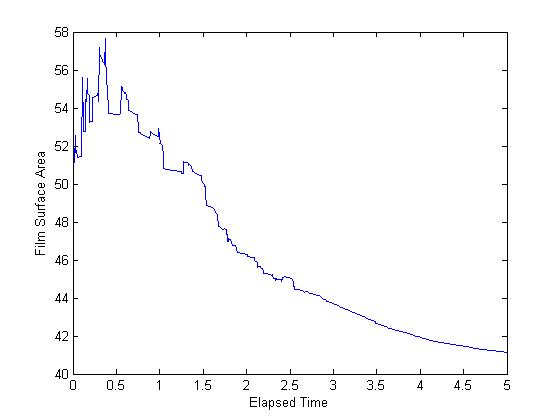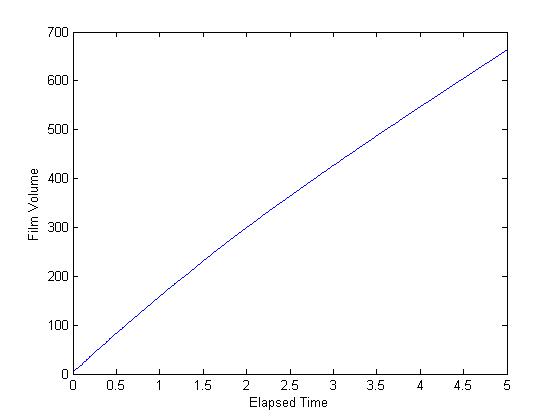
| Home |
| Basic Theory and Weak Statement |
| Computational Design |
| Matlab Methods |
| Results |
| Alternate Route |
Another route that was considered was to begin the simulation with an infinitely thin wetting layer and two seed particles. Later this approach was scrapped as it seemed to deviate largely from reality and the design used currently is more realistic. Below is a video clip of the simulation (download the original Matlab code here).
|
Film Surface Area vs. Time

Above we can see how the film surface area decreases with time. At first, this may seem counterintuitive but remember that inititally there was a layer with essentially two bumps on it. As the film forms, the thickness of the film increases and the bumps are abosrbed, since there was initially a layer to begin with, the loss of those bumps would then decrease the surface area. As time goes on, the surface area becomes constant since the only growth would be thickness. Note, since the simulation is two dimensional, the surface area is denoted as the arclength of the finite element curve in the simulation video. |
|
Film Volume vs. Time

Above we can see how the film volume versus time. As expected, over time the volume increases. Note that since this simulation is a two dimensional representation, the volume would be indicated as the area under the finite element curve in the simulation video. |
|